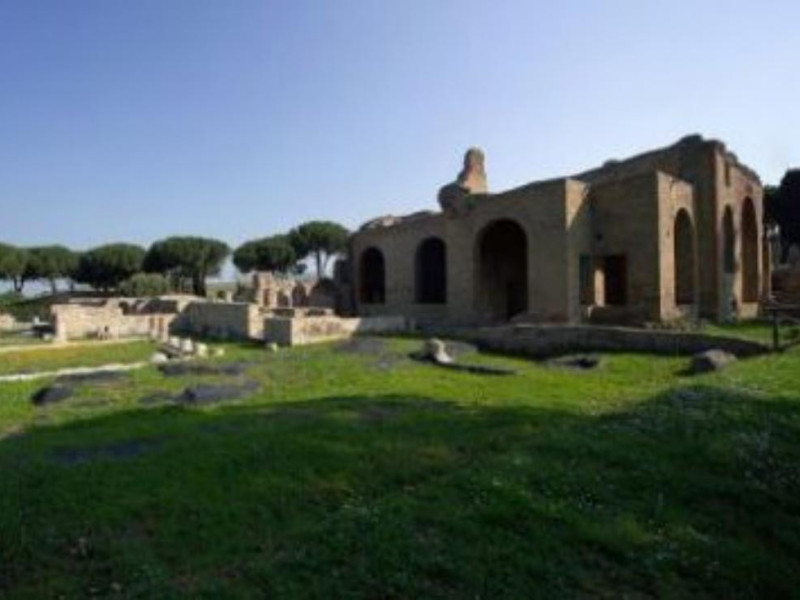Destinazioni - Comune
Civitavecchia
Where
Civitavecchia (Roma)
Civitavecchia [ˌtʃivitaˈvɛkkja] is a town and comune of the province of Rome in the central Italian region of Lazio. A sea port on the Tyrrhenian Sea, it is located 80 kilometres (50 miles) west-north-west of Rome, across the Mignone river. The harbour is formed by two piers and a breakwater, on which is a lighthouse. The name Civitavecchia means "ancient town".
History
The modern city was built over a pre-existing Etruscan settlement.
The harbour was constructed by the Emperor Trajan at the beginning of the 2nd century. The first occurrence of the name Centum Cellae is from a letter by Pliny the Younger (AD 107). The origin of the name is disputed: it has been suggested that it could refer to the centum ("hundred") halls of the villa of the emperor.
In the high Middle Ages, Centumcellae was a Byzantine stronghold. Raided by the Saracens in 828, it was later acquired by the Papal States.
The place became a free port under Pope Innocent XII in 1696 and by the modern era was the main port of Rome. The French occupied it in 1849. On 16 April 1859 the Rome and Civitavecchia Rail Road was opened for service. The Papal troops opened the gates of the fortress to the Italian general Nino Bixio in 1870.
During World War II, Allied bombings severely damaged Civitavecchia, and caused civilian casualties.
Economy
Civitavecchia is today a major cruise and ferry port, the main starting point for sea connection from central Italy to Sardinia, Sicily, Malta, Tunis and Barcelona. Fishing has a secondary importance.
The city is also the seat of two thermal power stations. The conversion of one of them to coal has raised the population's protests, as it has been suggested it could create heavy pollution.
Main sights
The massive Forte Michelangelo ("Michelangelo's fort") was first commissioned from Bramante by Pope Julius II, to defend the port of Rome, and was completed in 1535 by Giuliano Leno and Antonio da Sangallo the Younger, under Paul III. The upper part of the "maschio" tower, however, was designed by Michelangelo, whose name is generally applied to the fortress. The edifice, measuring 100 m × 82 m (328.08 ft × 269.03 ft), has four towers with a diameter of 21 m (68.90 ft). The main tower, of octagonal shape, has sides of 12 m (39.37 ft). The walls have an impressive thickness of 6–7.6 m (19.69–24.93 ft). The fortress was built over an ancient Roman construction, probably the barracks of the classiarii ("mariners") of the Imperial Fleet.
The Rocca ("castle"), re-built in the late 15th century by Pope Sixtus IV. A Palazzo Apostolico was added by Pius IV in the 16th century.
The cathedral of San Francesco d'Assisi was built by the Franciscans over a pre-existing small church built from 1610. The current edifice, with Baroque-Neoclassical lines, was erected in the eighteenth century.
North of the city at Ficoncella are the Terme Taurine baths frequented by Romans and still popular with the Civitavecchiesi. The modern name stems from the fig plants among the various pools.
Next to the town is the location of the cruise ship docks that service all of the Rome area. All major cruise lines start and end their cruises at this location, and many others stop for shore excursion days that allow guests to see Rome and Vatican sights, which are about 90 minutes away.
Geography
Climate
Civitavecchia experiences a Mediterranean climate (Köppen climate classification Csa).
Transport
The Port of Civitavecchia, also known as "Port of Rome", is an important hub for the maritime transport in Italy, for goods and passengers. Part of the "Motorways of the Sea" it is linked to several Mediterranean ports and represents one of the main links between Italian mainland to Sardinia.
Civitavecchia railway station, opened in 1859, is the western terminus of the Rome–Civitavecchia railway, which forms part of the Pisa–Livorno–Rome railway. A short line linking the town center to the harbour survived until the early 2000s. It counted two stations: Civitavecchia Marittima, serving the port, and Civitavecchia Viale della Vittoria.
Civitavecchia is served by the A12, an unconnected motorway linking Rome to Genoa and by the State highway SS1 Via Aurelia, which also links the two stretches. The town is also interested by a project regarding a new motorway, the Civitavecchia-Venice or New Romea, nowadays completed as a dual carriageway between Viterbo and Ravenna (via Terni, Perugia and Cesena) and commonly known in Italy as the Orte-Ravenna.
Twin towns and sister cities
Civitavecchia is twinned with:
Amelia, Italy
Bethlehem, Palestinian Authority, (since 2000)
Ishinomaki, Japan
Nantong, China
Tivat, Montenegro
Magas, Russia
Mobile, USA
Personalities
Manuele Blasi (b. 1980), football player
Silvio Branco (b. 1966), professional boxer
Andrea Casali (1705–1784), Rococo painter
Pasquale Lattanzi (b. 1950), former football player
Giancarlo Peris (b. 1941), former track athlete
Roberto Petito (b. 1971), road bicycle racer
Giulio Saraudi (1938–2005), boxer
Eugenio Scalfari (b. 1924), journalist, founder of la Repubblica
Emiliano Sciarra (b. 1971), game designer
Roldano Simeoni (b. 1948), former water polo player
Vittorio Tamagnini (1910–1981), boxer
See also
Civitavecchia Calcio
Civitavecchia di Arpino exists in the province of Frosinone (Lazio).
References
External links
Port of Rome
Images of Fort Michelangelo
Video Civitavecchia in English
Archeological sites
Official web site of CIVITAVECCHIA WiFi, property of the City of Civitavecchia
Civitavecchia Transfers to Rome

